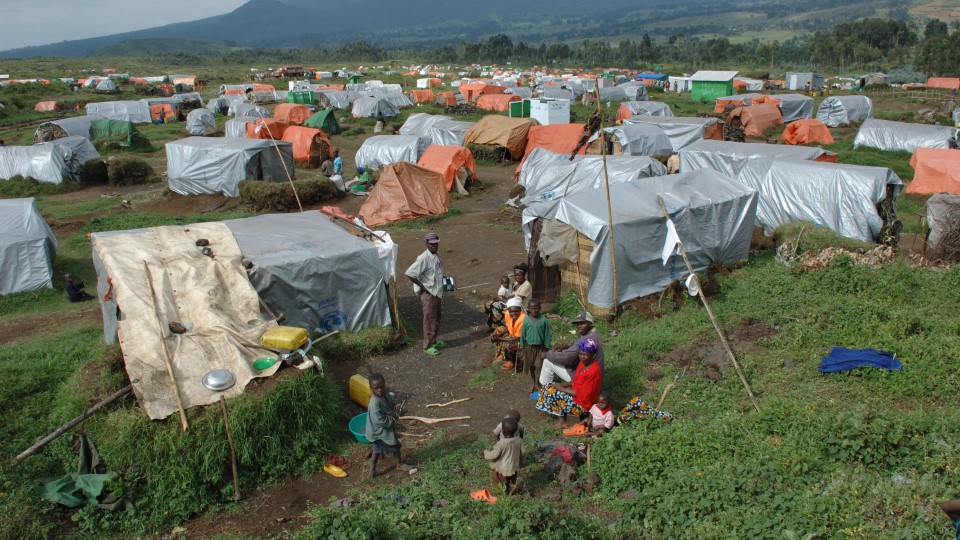UN: 1.5 Percent of the World's Population Displaced

Roughly 120 million people are currently displaced worldwide, fleeing violence, war, conflicts, and persecution. This is almost a ten percent increase from last year, as the UNHCR, the UN Refugee Agency, reported last Thursday. It was the twelfth consecutive year in which the number has risen. Roughly 1.5 percent of the global population has been forced to leave their home, as the UNHCR documents in a new report, “Global Trends: Forced Displacement in 2023”.
“Behind these stark and rising numbers lie countless human tragedies. That suffering must galvanize the international community to act urgently to tackle the root causes of forced displacement,” said Filippo Grandi, the UN High Commissioner for Refugees.
Nearly two thirds of refugees are displaced within the borders of their own home countries. The impression that migrants and refugees are streaming into primarily rich countries is false, Grandi said, noting that 75 percent of displaced persons, whether displaced within the borders of their home countries or living abroad, reside in low- or middle-income countries. For the most part, wealthy countries are not the ones affected. Most people, after fleeing to neighboring countries, hold out hope that they can quickly return home.
Refugees seek asylum in the US and Germany
For people without the option of returning home soon, the United States and Germany are highly sought after as places of refuge: the US has by far the most applications for asylum, with a total of 1.2 million. After that comes Germany, with roughly 330,000, followed by Egypt, Spain, and Canada.
It is difficult to compare numbers from year to year; record keeping in some countries continues to improve, and in some cases the surveying methods change. The records refer to the period since 1951, when the UNHCR first started keeping track of refugee numbers.
The power struggle between the army and the paramilitary Rapid Support Forces in Sudan and the war between Israel and Hamas are among the conflicts that forced millions of people to flee in 2023. Large-scale forced displacement also occurred in Myanmar and the Democratic Republic of Congo.
“For me, the dramatic rise in the number of refugees shows very clearly that right now we need more development work and not less,” said German Minister of Economic Cooperation and Development Svenja Schulze of the Social Democratic Party (SDP) in response to the report. Development policies, she said, create opportunities for refugees in their host country as well as opportunities for them to return home. “This is in the interest of Germany as well,” said Minister Schulze.
In debates over the federal budget for 2025, German Finance Minister Christian Lindner of the Free Democratic Party (FDP) has questioned Schulze’s aid policies.
Global Hotspots
The report’s analysis pertains to the 2023 calendar year. As of December 31, 2023, there were 117.3 million displaced persons worldwide – 8 percent more than at the end of 2022. 68.3 million people were displaced within the borders of their own country. This number is 50 percent higher than five years ago.
Germany has the fourth-highest number of refugees taken in, with 2.6 million, placing it behind Iran (3.8 million), Turkey (3.3 million), and Columbia (2.9 million).
In Sudan, more than 9 million people have been forcibly displaced since April 2023, including 1.9 million who have fled the country. In the Gaza Strip the number of displaced persons is 1.7 million, according to the UNHCR – roughly 75 percent of the population. Many in Gaza have been forced to flee more than once. In Myanmar, 2.6 million people were displaced – twice as many as in the preceding year.
“Syria remains the world’s largest displacement crisis, with 13.8 million forcibly displaced in and outside the country,” the UNHCR stated in its press release. The UNHCR puts the number of Afghan refugees at 10.9 million, of whom 6.4 million have sought refuge abroad. In Ukraine 9.7 million have been forced to flee their homes; 6 million have fled abroad.
Referring to the numerous conflicts at the root of the displacement crisis, UN High Commissioner Grandi said, “It is high time for warring parties to respect the basic laws of war and international law. The fact is that without better cooperation and concerted efforts to address conflict, human rights violations and the climate crisis, displacement figures will keep rising, bringing fresh misery and costly humanitarian responses.”
Climate crisis exacerbates situation
The effects of the climate crisis are particularly evident in regions already affected by conflicts, poverty, hunger, and poor governance, the report notes: “At the end of 2023, almost three-quarters of forcibly displaced people were living in countries with high-to-extreme exposure to climate-related hazards.” These included the Democratic Republic of Congo, Somalia, Sudan, Syria, and Yemen.
The struggle for resources in host countries that are strongly impacted by climate change could lead to new waves of displacement, the report argues, for example in places where drinking water is already scarce or where drought increasingly leads to crop failures and loss of livestock.
Though the situation is dire, High Commissioner Grandi nevertheless sees reasons for hope. Last year, throughout the world, five million internally displaced people and one million refugees were able to return to their homes. Said Grandi: “Refugees – and the communities hosting them – need solidarity and a helping hand. They can and do contribute to societies when they are included.” Solutions are out there, Grandi said, and pointed to countries like Kenya that had demonstrated how refugees could be integrated into the societies that take them in. (dpa / hcz)